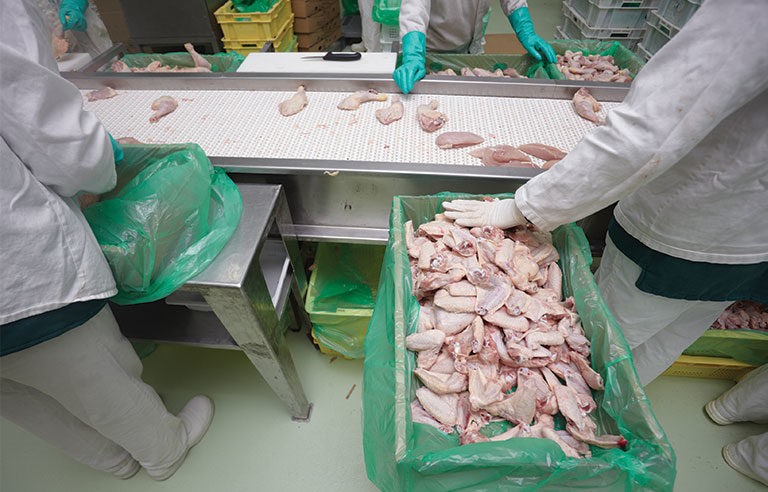USDA announces criteria for allowing poultry processors to operate at faster line speeds

Washington — The U.S. Department of Agriculture’s Food Safety and Inspection Service will allow poultry-processing plants to increase line speeds if they meet certain criteria, even as critics claim the move will expose workers to injuries and was made without public input.
In a Federal Register notice published Sept. 28, FSIS states that it will grant waivers that permit line speeds to increase to 175 birds per minute – up from the current limit of 140 birds – if plant operators:
- Operate under the New Poultry Inspection System for at least one year and comply with NPIS requirements during that time.
- Have a “demonstrated history” of regulatory compliance, including not being involved in a public health alert or an enforcement action triggered by a Food Safety Assessment in the past 120 days.
- Demonstrate that new equipment, procedures or technologies that allow for operation at a faster line speed will maintain or improve food safety.
- Provide details about the establishment’s Hazard Analysis and Critical Control Point system, including plans for the inhibition and reduction of Salmonella.
- Provide supporting information on how the increased line speed will not impact FSIS employee safety negatively or interfere with inspection procedures.
FSIS states that it created additional requirements following comments to a National Chicken Council petition from September 2017. In a letter sent to NCC on Jan. 29, the agency denied the council’s request for unrestricted line speeds, noting that it already had a process in place to address “requests for the use of alternative procedures, such as faster line speed.”
An OSHA memo released in 2015 cites data showing that poultry workers have serious injury rates almost double that of the private industry average and an illness rate more than six times higher than the average for all U.S. industries. The memo also notes that “literature suggests the likelihood of substantial under-reporting of worker injuries and illnesses by poultry industry employees.”
The Federal Register notice from FSIS points to comments on the NCC petition from poultry trade associations and establishments contending that Bureau of Labor Statistics data shows worker injury and illness rates decreasing by more than 80 percent since 1994. FSIS adds that OSHA, not FSIS, is in charge of worker safety.
In an Oct. 4 press release from the National Employment Law Project, Debbie Berkowitz, NELP program director for worker safety and health, called the FSIS announcement “stunning” and said it violates the Administrative Procedure Act.
“With no notice requesting comments from the public, the Trump administration’s Department of Agriculture has declared that it will start a new program to allow chicken plants to increase their line speeds, despite increasing evidence that this will endanger vulnerable workers, public health and animal welfare,” Berkowitz said in the release.
The American Society for the Prevention of Cruelty to Animals criticized FSIS in a post on its website Oct. 3, claiming the agency’s plan “is bad for birds, bad for slaughter plant workers and threatens food safety.”
Post a comment to this article
Safety+Health welcomes comments that promote respectful dialogue. Please stay on topic. Comments that contain personal attacks, profanity or abusive language – or those aggressively promoting products or services – will be removed. We reserve the right to determine which comments violate our comment policy. (Anonymous comments are welcome; merely skip the “name” field in the comment box. An email address is required but will not be included with your comment.)

